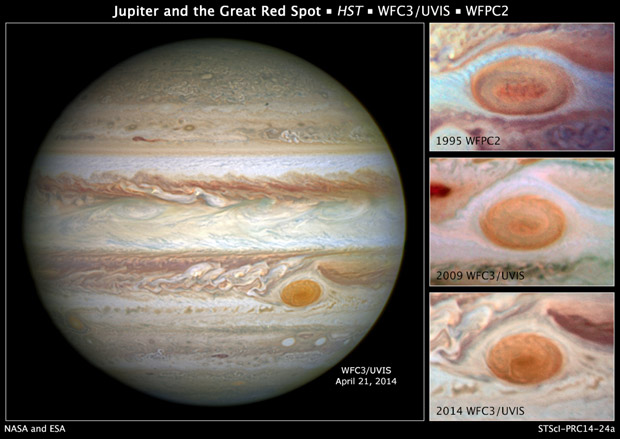Jupiter's Great Red Spot shrinking before our eyes
Jupiter's Great Red Spot seems to be on a cosmic diet, shrinking rapidly before our eyes.
Astronomers using the Hubble Space Telescope calculate that the spot, a giant long-lasting storm, is narrowing by about 580 miles a year, much faster than before.
Observations dating as far back as the late 1800s show that the red spot was an oval 25,500 miles wide. Beginning in 2012, it appeared to shrink at a much faster pace, with current data indicating a circle that's 10,250 miles across.
"In our new observations it is apparent that very small eddies are feeding into the storm," Amy Simon, of NASA's Goddard Space Flight Center, said in a press release. "We hypothesized that these may be responsible for the accelerated change by altering the internal dynamics and energy of the Great Red Spot."
Michael Wong, a scientist at the University of California, Berkeley, told The Associated Press that the spot is a mystery. Astronomers don't know why it's red or shrinking, or what will happen next. If this pace continues, in 17 years the spot could be gone. Or it could stop at a smaller size.
Another possible theory is the spot eats smaller storms, and that it is consuming fewer of them, says Wong.
